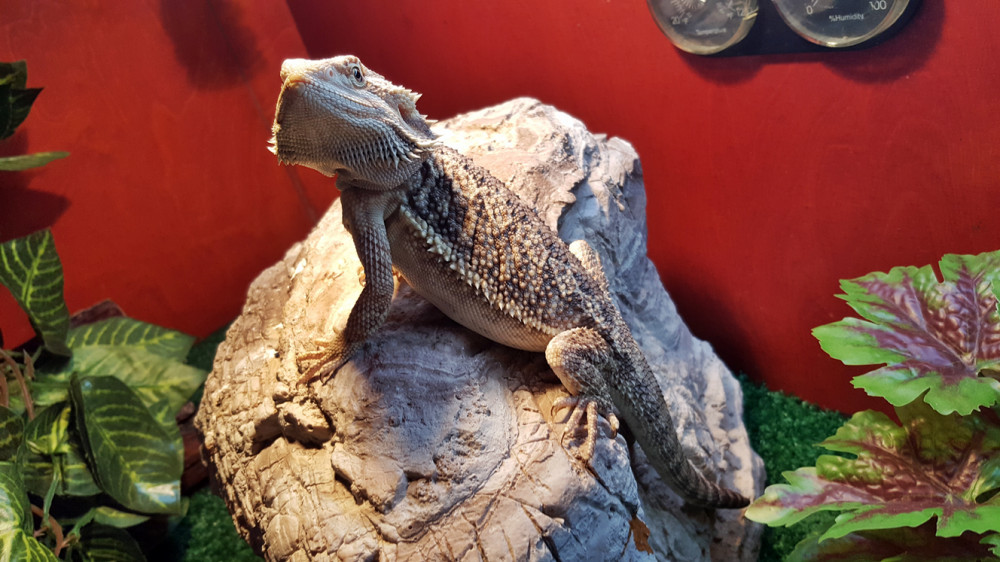Looking after a baby bearded dragon can be tricky and raising a baby is much more difficult. There are quite a few things that are similar to caring for an adult, but there are a few things that differ. So here is everything you need to know to care for a baby bearded dragon. This entire website is devoted to caring for bearded dragons with detailed posts about everything. 90% of the time, caring for a baby has the same principle as caring for an adult so I will not re-list everything in this post. Please, browse around this site to get detailed information about each topic.
Baby Bearded Dragon Cage Setup
So the cage setup of a baby dragon is very similar to that of an adult, with only a few things that differ. Always make sure there are not even the tiniest of holes that are not covered by a cover as babies will climb anything and can escape. (Ventilation is a must so make sure the ventilation holes have covers on them).
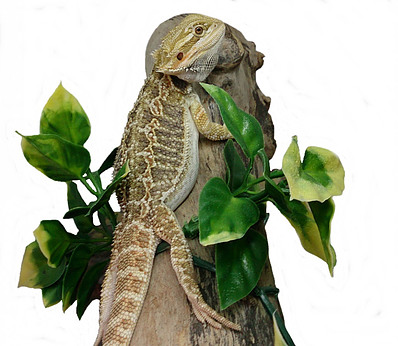
Temperature and Humidity
The temperature is slightly higher for babies as they need the heat a lot more with such small bodies. Their temperature under the basking light should be between 86 and 89.6 degrees Fahrenheit (30 to 32 degrees Celsius). The humidity has to be a little lower but not much. It should be between 37% and 40%.
Lighting and Heating
The lighting and heating are exactly the same as that of the adults. The cage should have a white basking light (Watt itch depends on how far away the light is from the basking spot and the size of the cage) and a UVB light with an output of 10.0 (Preferably the tube and not the spiral). Follow the instruction received with the UVB light to know how high to place it in the cage.
Make sure they cannot reach the light as they will almost certainly try to climb it which can lead to severe burns and injuries. If you use a wire cover over the light, again make sure they cannot reach and climb it.
Cage Size, Substrates, and Accessories
Baby bearded dragons should not be placed in large cages as they will dwell away from the light and not bask. The cage should be around 1.3 meters in length and 0.5 meters high and wide (50 inches in length and 20 inches wide and high).
Lose substrates like sand and so forth should not be used with babies as they are small and can eat it or get injured. Rather use tiles, fake grass, carpet, and so forth.
A basking rock or log will be needed same as with adults. A single hide can be placed, but if the baby is in it permanently, it should be removed. Something to climb on should also be included along with a few fake plants to bring some color to the cage. Keep an eye out, some babies will try to eat the fake plants which can be dangerous. A small and shallow water bowl should also be placed for when they want to drink or bathe.
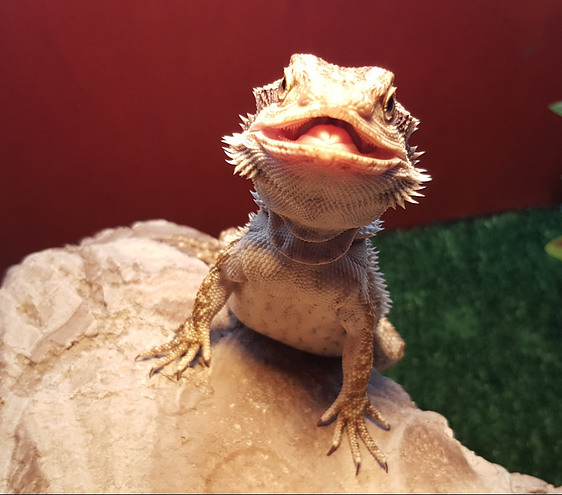
Baby Bearded Dragon Diet
Baby dragons can eat almost everything that adult dragons eat except for a few things like superworms, mealworms, wax worms, dragon pellets, and so forth. Other than that it is not quite different than that of the adult bearded dragon diet, however, how much and how frequently does differs quite a bit.
Baby beardies should eat 2 to 3 times a day every day whereas juveniles eat 1 to 2 times a day and adults once a day. Their diet should also consist of 80% insect protein and 20% plant material, meaning they get fed insects every day with a few veggies, greens, and fruits 1 to 2 times a week. Greens should be offered from the start otherwise; when they grow up they will not make the change from insect protein to plant protein which will affect their health.
Small Turkestan roaches, Dubai roaches, hornworms, silkworms, and cricket pins are the best insect feeders for baby dragons.
Always remember to NOT feed any type of food in a size larger than the space between the eyes. Food can be a little bigger than the space by a few millimeters.
Complete Bearded Dragon, Food List
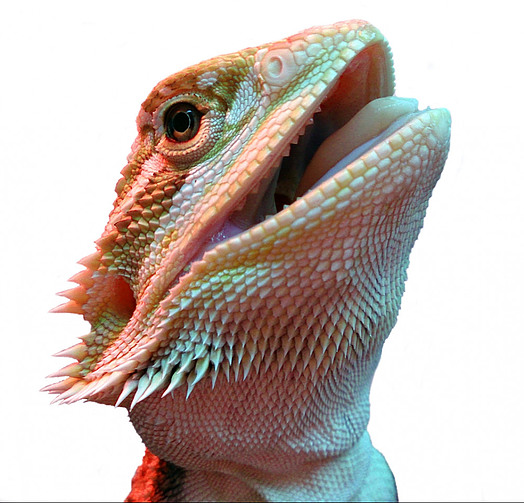
Supplements
Baby bearded dragons, like adult dragons, need supplements, more than you know. They should receive calcium every third day and vitamins twice a week. Remember to never mix supplements or medications, rather give the most important one first and the other the next day should the schedule overlap.
Supplements can be given by putting some powder in a container along with a few insects. Give it a shake, but do not kill the insects. Feed the supplement-covered insect to your beardie and remove all traces of these supplements afterward to avoid your beardie ingesting more than it should and overdosing.
Baby Bearded Dragon – Health and Wellness
Shedding
Baby bearded dragons shed a lot due to the fact that they are fast growers at a young age. When they start to shed, shallow lukewarm (not hot, but not cold either) baths should be given to help loosen skin as skin that does not shed properly can cause health problems later on.
If shedding problems do occur and regular baths are not helping, you can make use of a shedding aid to help correct the problem.
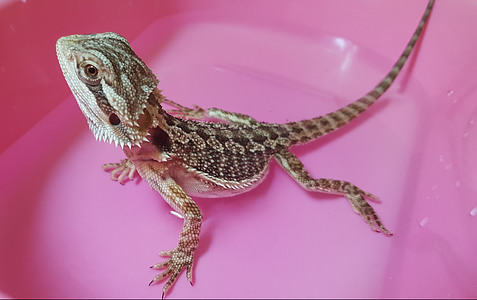
Hygiene
Bearded dragon hygiene is very important no matter what age they are. Regular baths should be given to keep them clean and parasite-free. During these bath times, a soft baby’s toothbrush should be used to wash them very gently. Their nails should be clipped when they get too long to avoid them curling over and causing problems. Their cages should be cleaned daily and washed once a month to avoid bacteria and parasites. Poop should be cleaned out immediately and fresh water should be supplied every day.
Baby Bearded Dragon Tips
Do give attention, but avoid picking your baby dragon up regularly as they are small and can be easily injured. Rather show your hand and coax them to get on by themselves.
Let them out so they can roam and explore, but keep an eye out they are small and fast and can easily get away. (Let them walk on your bed or couch while you are sitting there keeping an eye)
Do not put them in the same room as any other pets, especially other dragons.
Each dragon must have their own cage and should not share with others. (Make sure that they cannot see one another if their cages are in a single room.)
I recommend not giving pellets at all as they can struggle to digest them.
Put a small and soft thing in the cage like a teddy and they will love you forever.
Avoid wires and high accessories as baby beardies are climbers and who knows what they will do.
